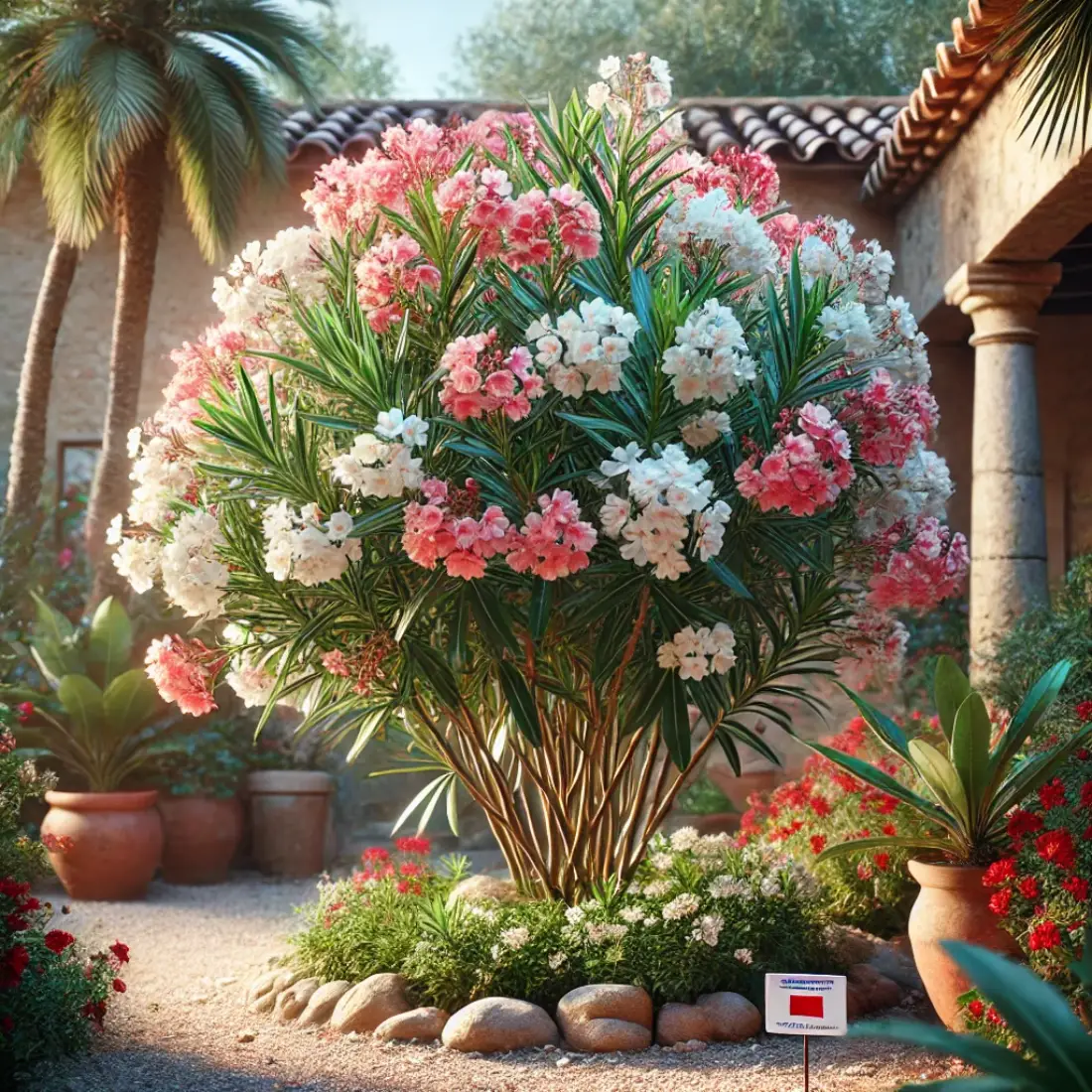Magnolias are ancient, enchanting trees known for their large, fragrant flowers and glossy, evergreen or deciduous leaves. These trees belong to the Magnoliaceae family, with over 200 species spread across North and South America, the Caribbean, and East Asia. Magnolias are valued for their stunning beauty and versatility in landscaping.
Magnolias thrive in a variety of climates, from temperate to subtropical regions. They prefer well-drained, slightly acidic to neutral soil and can tolerate partial shade to full sun. These trees are relatively low-maintenance once established but benefit significantly from organic care practices, especially organic fertilization, which supports healthy growth and vibrant flowering.
Common Species:
Southern Magnolia (Magnolia grandiflora): Famous for its large, white, fragrant flowers and glossy, evergreen leaves.

Star Magnolia (Magnolia stellata): Known for its star-shaped flowers that bloom in early spring.

Saucer Magnolia (Magnolia × soulangeana): Features large, saucer-shaped flowers in shades of pink, purple, and white.

Choosing the Right Location
Selecting the ideal location for planting your Magnolia is crucial to its long-term health and growth. Magnolias thrive in areas that offer well-drained, slightly acidic to neutral soil, rich in organic matter. They prefer a spot that receives full sun to partial shade, as adequate sunlight is essential for optimal flowering and overall vigor.
When choosing a location, consider the mature size of your Magnolia species, ensuring there is enough space for it to grow without crowding other plants. Proper spacing not only allows for healthy root development but also ensures good air circulation, reducing the risk of fungal diseases.
Avoid planting Magnolias in areas prone to strong winds, as their large flowers and branches can be damaged easily. Additionally, steer clear of low-lying areas where water might pool, as Magnolias do not tolerate waterlogged soil. With the right location, your Magnolia will flourish, offering years of beauty and enjoyment.
Planting Magnolias
Planting Magnolias correctly is essential for their successful establishment and long-term growth. The best time to plant Magnolias is in the early spring or fall when temperatures are mild, allowing the tree to establish roots before extreme weather conditions set in.
Step-by-Step Planting Guide:
- Select a Healthy Sapling: Choose a young Magnolia tree from a reputable nursery. Look for healthy, disease-free plants with a strong root system.
- Prepare the Planting Site: Dig a hole twice as wide and just as deep as the root ball. Ensure the hole has well-drained soil to prevent waterlogging, which Magnolias are sensitive to.
- Amend the Soil: If your soil is poor, mix in organic compost to enhance fertility and drainage. This provides essential nutrients and a good start for your Magnolia.
- Plant the Tree: Place the Magnolia in the hole, ensuring the top of the root ball is level with or slightly above the ground. This prevents the tree from being planted too deeply, which can cause root rot.
- Backfill and Water: Fill the hole with the amended soil, gently firming it around the roots. Water the tree thoroughly to eliminate air pockets and settle the soil.
- Mulch: Apply a layer of organic mulch around the base of the tree, keeping it a few inches away from the trunk. Mulching helps retain soil moisture, regulate temperature, and suppress weeds.
- Stake if Necessary: If your area is windy or the tree is top-heavy, stake it to provide support until the roots are well-established.
Watering Magnolias
Proper watering is crucial for the healthy growth of Magnolias, especially during their establishment phase. Young Magnolias need consistent moisture to develop a strong root system. Water your newly planted Magnolia deeply once a week, ensuring the soil remains evenly moist but not waterlogged.
Use organic mulch around the base of the tree to help retain moisture, reduce evaporation, and regulate soil temperature. As the tree matures, it becomes more drought-tolerant, but regular watering during dry periods is still essential to support blooming and overall health.
Avoid overhead watering, as wet foliage can encourage fungal diseases. Instead, use a soaker hose or drip irrigation system to deliver water directly to the root zone. Monitor the soil moisture regularly and adjust your watering schedule based on weather conditions and soil type to ensure your Magnolia receives the right amount of water.
Organic Fertilizing Methods for Magnolias
Organic fertilizing promotes healthy growth for Magnolias while being environmentally friendly. Here are some effective organic methods:
Compost:
- Benefits: Enriches soil with nutrients and improves structure.
- Application: Apply a 2-3 inch layer around the base in spring and fall, keeping it away from the trunk.
- Frequency: Twice a year, with periodic light layers.
Manure:
- Benefits: Adds essential nutrients and enhances soil fertility.
- Application: Spread well-rotted manure around the base and mix into the topsoil.
- Frequency: Annually, in early spring or late fall.
Bone Meal:
- Benefits: High in phosphorus for strong roots and flowers.
- Application: Sprinkle around the drip line and water thoroughly.
- Timing: Early spring.
Fish Emulsion:
- Benefits: Provides a quick nitrogen boost for lush foliage.
- Application: Dilute as per instructions and apply as a soil drench or foliar spray.
- Frequency: Every 4-6 weeks during the growing season.
Seaweed Extract:
- Benefits: Rich in trace minerals and growth hormones.
- Application: Use as a soil drench or foliar spray following guidelines.
- Frequency: Every 4-6 weeks during the growing season.
Pruning Magnolias
Pruning Magnolias is essential for maintaining their shape, promoting healthy growth, and removing any dead or diseased branches. However, it should be done with care to avoid damaging the tree.
Best Time to Prune:
- Prune Magnolias after they finish blooming, usually in late spring or early summer. This timing helps prevent the removal of buds that will flower the next season.
Pruning Steps:
- Remove Dead or Damaged Wood: Cut away any dead, damaged, or diseased branches. This prevents the spread of disease and promotes healthy growth.
- Shape the Tree: Trim back any overgrown or crossing branches to maintain the desired shape and improve air circulation.
- Light Pruning: For young trees, perform light pruning to encourage a strong structure. For mature trees, limit pruning to only necessary cuts to avoid stress.
Tools and Tips:
- Use sharp, clean pruning shears to make clean cuts.
- Avoid heavy pruning, as Magnolias do not respond well to excessive cutting.
- Make cuts at a 45-degree angle, just above a bud or branch junction.
Propagation of Magnolias
Propagating Magnolias can be done through seeds, cuttings, or grafting. Here are the organic methods for propagation:
Seed Propagation:
- Collect Seeds: Gather seeds from ripe Magnolia pods in the fall.
- Stratify Seeds: Soak seeds in water for 24 hours, then refrigerate them in moist sand for 3-4 months.
- Plant Seeds: Sow seeds in a well-draining, organic potting mix in spring. Keep the soil moist and place it in a sunny location.
Cuttings:
- Take Cuttings: In early summer, take semi-hardwood cuttings about 6 inches long.
- Prepare Cuttings: Remove the lower leaves and dip the cut end in organic rooting hormone.
- Plant Cuttings: Insert the cuttings into a pot with a mix of peat and perlite. Keep the soil moist and cover the pot with a plastic bag to retain humidity.
- Root Development: Place in a warm, bright location and wait for roots to develop, usually within a few months.
Grafting:
- Select Rootstock: Choose a healthy Magnolia rootstock.
- Prepare Scion: Take a healthy scion from the desired Magnolia variety.
- Graft: Use a clean, sharp knife to make matching cuts on the rootstock and scion. Bind them together with grafting tape.
- Care for Graft: Keep the grafted plant in a sheltered location and ensure it receives consistent moisture until the graft takes.
Troubleshooting Common Issues
Yellowing Leaves:
- Causes: Overwatering, poor drainage, or nutrient deficiencies.
- Solutions: Ensure well-drained soil and avoid overwatering. Test soil pH and adjust with organic amendments if necessary. Apply compost or organic fertilizers to provide essential nutrients.
Leaf Spot Diseases:
- Causes: Fungal infections, often due to poor air circulation and high humidity.
- Solutions: Remove and dispose of affected leaves. Improve air circulation by pruning overcrowded branches. Apply organic fungicides like neem oil or copper-based sprays.
Powdery Mildew:
- Causes: Fungal infection, typically in warm, dry conditions with poor air circulation.
- Solutions: Prune to increase air flow. Use organic treatments like potassium bicarbonate or neem oil. Ensure proper watering to keep foliage dry.
Poor Flowering:
- Causes: Inadequate sunlight, improper pruning, or nutrient deficiencies.
- Solutions: Ensure the Magnolia receives sufficient sunlight (at least 4-6 hours daily). Prune correctly after flowering to avoid removing buds. Fertilize with organic options like bone meal or compost in early spring.
Pest Infestations:
- Causes: Aphids, scale insects, or spider mites.
- Solutions: Introduce beneficial insects like ladybugs or lacewings to control pests naturally. Spray with insecticidal soap or neem oil for severe infestations.
Root Rot:
- Causes: Overwatering or poorly drained soil.
- Solutions: Improve drainage by amending soil with organic matter. Reduce watering frequency and ensure the tree is planted at the correct depth.
Wilting or Dieback:
- Causes: Drought stress, root damage, or diseases.
- Solutions: Water deeply and consistently during dry periods. Mulch to retain soil moisture. Inspect roots for damage or disease and prune affected areas.
FAQs about Growing Magnolia Tree
How often should I water my Magnolia tree?
Water young Magnolias deeply once a week to establish roots. Mature trees need watering during dry periods to maintain health and promote blooming.
What type of soil is best for Magnolias?
Magnolias thrive in well-drained, slightly acidic to neutral soil rich in organic matter. Amend poor soil with compost to improve fertility and structure.
Can I grow Magnolias in containers?
Yes, dwarf varieties of Magnolias can be grown in large containers. Use a well-draining potting mix and ensure the container has adequate drainage holes.
How can I protect my Magnolia from pests organically?
Introduce beneficial insects like ladybugs to control aphids and other pests. Use organic sprays such as neem oil or insecticidal soap for severe infestations.
When is the best time to prune Magnolias?
Prune Magnolias after they finish blooming in late spring or early summer. This timing prevents the removal of buds that will flower the next season.
What organic fertilizers are best for Magnolias?
Compost, well-rotted manure, bone meal, fish emulsion, and seaweed extract are excellent organic fertilizers. Apply these according to the tree’s needs and growth stages.
How do I know if my Magnolia is getting enough nutrients?
Signs of nutrient deficiency include yellowing leaves, poor growth, and weak flowering. Regularly apply organic fertilizers and monitor the tree’s health.
Can Magnolias tolerate full sun?
Yes, most Magnolia species thrive in full sun to partial shade. Ensure they receive at least 4-6 hours of sunlight daily for optimal growth and flowering.
How do I propagate Magnolias organically?
Propagate Magnolias using seeds, cuttings, or grafting. Each method has specific steps to ensure successful growth and establishment.
What should I do if my Magnolia has root rot?
Improve soil drainage by amending with organic matter and reducing watering frequency. If root rot is severe, prune affected roots and ensure the tree is planted correctly.











